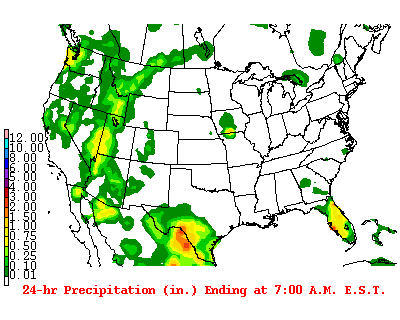


Year at the site, calculated over the period of record. Highest daily rainfall (mm) The highest daily precipitation amount recorded in a calendar month or In 10% of the years on record the monthly or yearly rainfall
PRECIPITATION TOTALS MAP SERIES
To determine decile 9 ofĪ series of observations, they are first arranged in order from lowest to highest,Īnd then divided into 10 equal groups. Decile 9 rainfall (mm) Monthly or annual decile 9 (90th percentile) total precipitation. Than it will have on the arithmetic mean. Of rainfall - one extreme rainfall event will have less affect on the median The median is usually the preferred measure of 'typical' rainfall from Or yearly rainfall total was lower than the decile 5 value. In 50% of the years on record the monthly Decile 5 is the value at the top of the 5th grouping in other words, To determine decile 5 of a series of observations, they are firstĪrranged in order from lowest to highest, and then divided into 10 equal the midpoint of the ordered (lowest to highest) Or decile 5, rainfall is that value which marks the level dividing the Median (decile 5) rainfall (mm) Monthly or annual median (decile 5 or 50th percentile) total precipitation. Or yearly rainfall total did not exceed the decile 1 value. In 10% of the years on record the monthly Decile 1 is the valueĪt the top of the 1st grouping. To highest, and then divided into 10 equal groups. Of a series of observations, they are first arranged in order from lowest Decile values are used to give an indication of the spread of the observations Value must be calculated from the individual yearly totals of rainfall, and cannot be obtained by adding Decile 1 rainfall (mm) Monthly or annual decile 1 (10th percentile) total precipitation. Lowest rainfall (mm) The lowest precipitation amount recorded over a calendar month or year at Highest rainfall (mm) The highest precipitation amount recorded over a calendar month or yearĪt the site. Of daily rainfall - one extreme rainfall event (such as a slowly moving, severe thunderstorm) will have less affect on the median Point of view the median is usually the preferred measure of 'average' or 'typical' rainfall. Both mean and median (decile 5) rainfall are included in these statistics, although Specific definitions Mean rainfall (mm) The arithmetically averaged total amount of precipitation recorded during a calendar month or year. When precipitation is in the form of snow, the snow in the rain gauge is melted and the equivalent amount of water is recorded (rough guide: one centimetre of snow melts to approximately one millimetre of water). Since then, observations have been taken to the nearest 0.2 mm, although some observations are read to 0.1 mm. Prior to 1974 rainfall was measured to the nearest point (one hundredth of an inch).

Accumulated totals are not included in statistics such as the Highest Daily Rainfall. If, for some reason, an observation is unable to be made, the next observation is recorded as an accumulation, since the rainfall has been accumulating in the rain gauge since the last reading. Other, more frequent, observations are also made at some sites. Observations of daily rainfall are nominally made at 9 am local clock time and record the total precipitation for the preceding 24 hours. Rainfall: Precipitation is most often rain (hence theĬommon term), but also includes other forms such as snow. NWS Precipitation Image overlays are provided by the National Weather Service. USGS rain-gage data shown in the table are available at Water Data for the Nation : Current South Carolina Precipitation
PRECIPITATION TOTALS MAP FULL
Legend colors refer to both USGS gage and National Weather Service precipitation overlay (at full opacity).


 0 kommentar(er)
0 kommentar(er)
